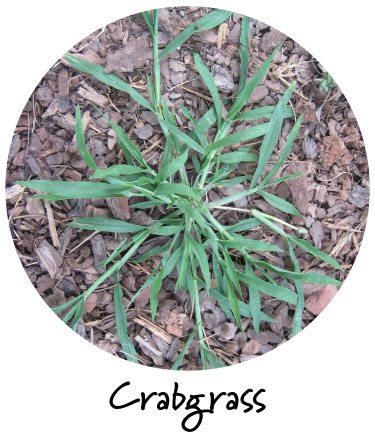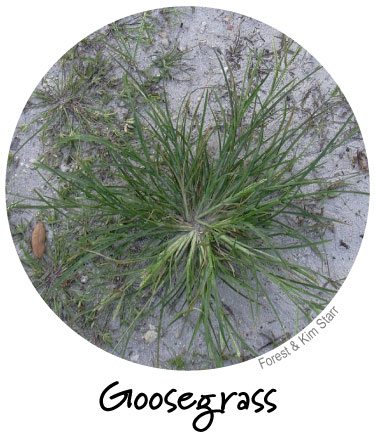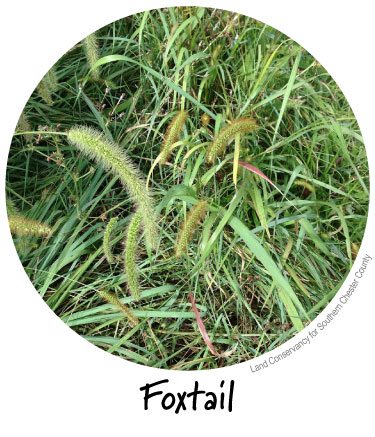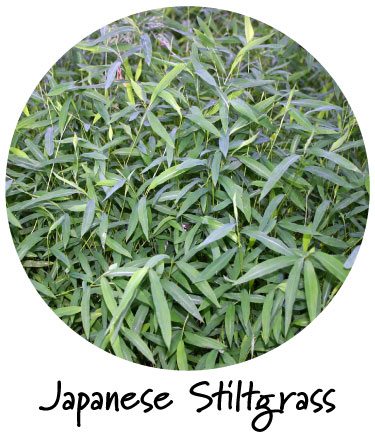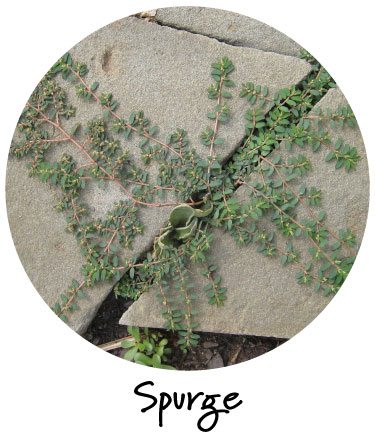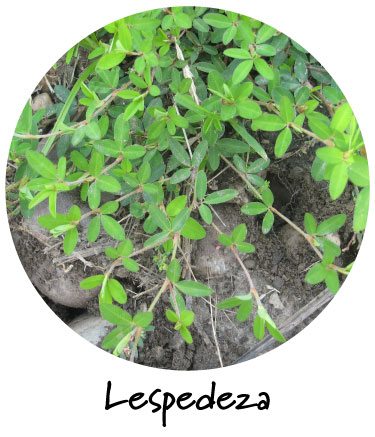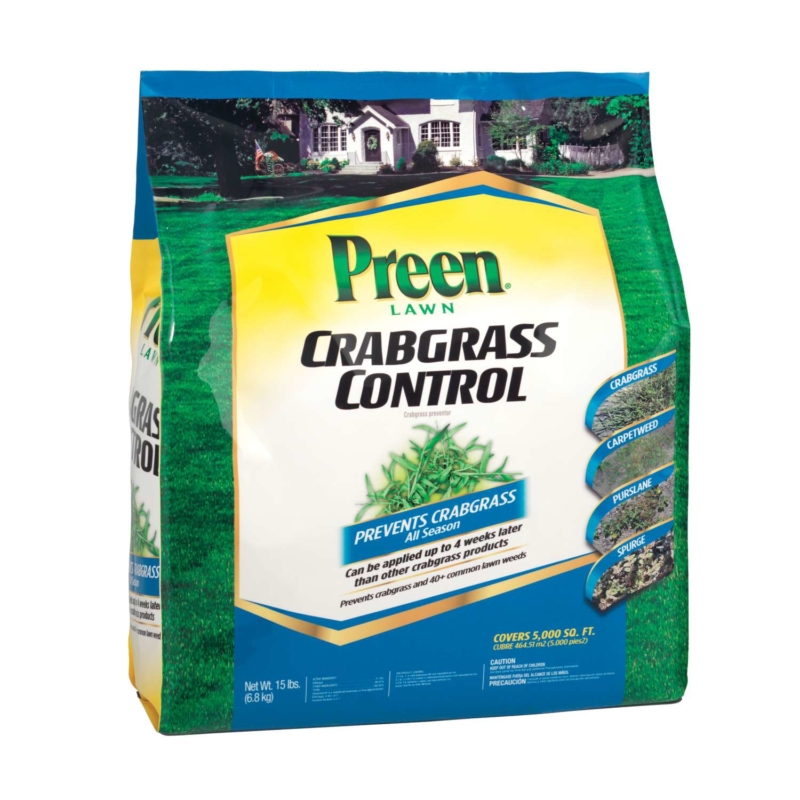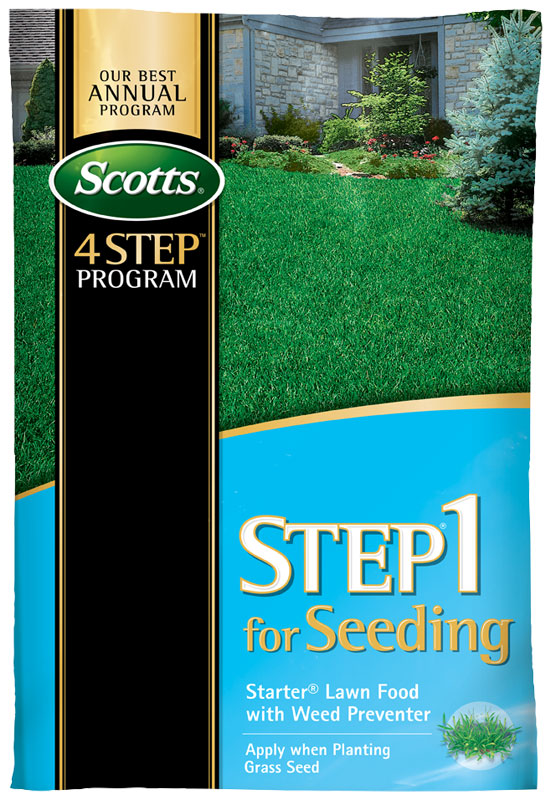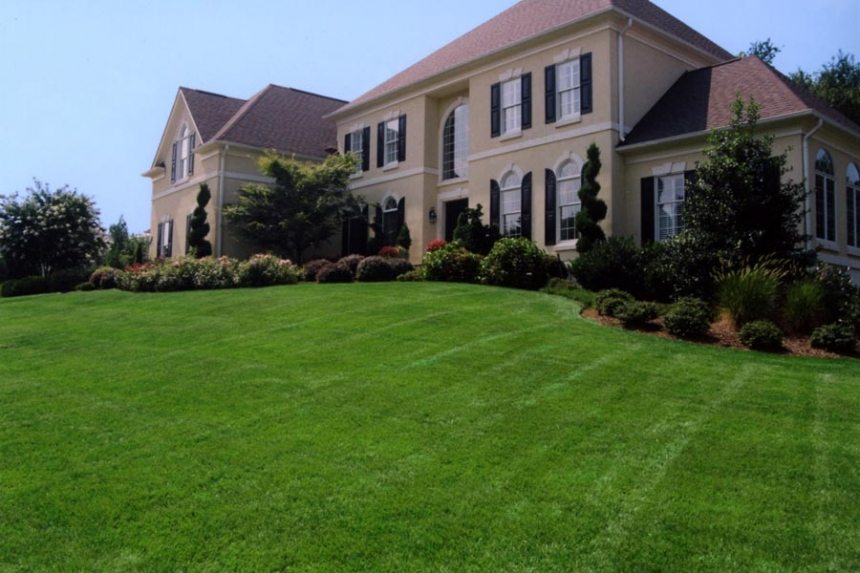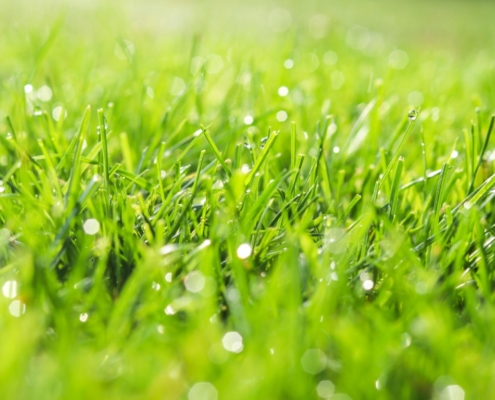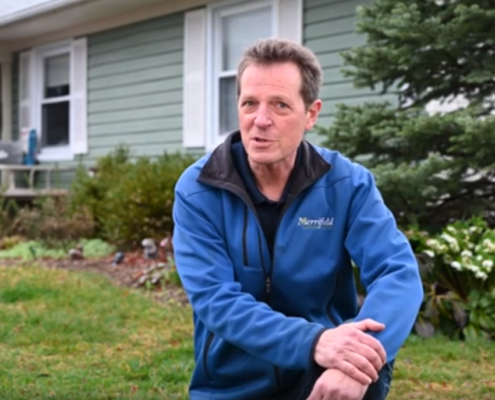Turf Tips: Seeding & Fertilizing
David Yost, Merrifield Plant Specialist
A thick, healthy, dark green lawn is important to the look of your overall landscape. Colorful annuals, healthy shrubs and stately shade trees are wonderful features, but the overall appearance of your property is often dictated by the lawn. Having a beautiful lawn is not as difficult or time consuming as you might think. Mowing the lawn is the biggest chore, but all the other tasks are rather minimal.
Spring is the ideal time to get started building a healthy lawn. Controlling weeds is the first order of business. Next up is seeding and fertilizing, two simple steps that can be done the same day, and in any order.
Seeding
Seeding gives you the opportunity to introduce new and improved varieties of grass to your lawn. The term “overseeding” simply means applying grass seed “on top of” the existing lawn. New seeds will settle down on the soil surface between existing blades of grass, and from there it will germinate and fill in the lawn.
Although we carry many different types of grass seeds, we recommend our private label options as they are custom blended for the specific conditions in our Northern Virginia area. The varieties in our mixtures were selected because of their superior performance in local and regional turf trials conducted independently by Virginia Tech and the University of Maryland. We have three different blends of grass seed:
Merrifield Tuff Play
- Our most versatile and popular mixture. Great for high traffic areas as it contains top performing tall fescues with a touch of Kentucky bluegrass.
- This mix performs well in full sun to 70% shade conditions.
- It establishes itself quickly, tolerates drought and wear and tear, and is resistant to disease problems.
Merrifield Sunny
- This blend contains top performing varieties of Kentucky bluegrass and perennial ryegrass for a premium lawn with a rich, dark green color.
- This mix performs best in full sun to part shade conditions and requires more maintenance and water than the fescue blends.
- Good traffic tolerance.
Merrifield Shady
- This mix contains top performing fine-textured fescue, shade tolerant perennial ryegrasses and Kentucky bluegrass.
- This mix is ideal for use in moderate to heavy shade conditions.
- It produces a soft, fine-bladed grass that is not quite as traffic tolerant as Merrifield Tuff Play.
If you need assistance selecting the right seed for your lawn, stop by or call the garden center and speak with one of our turf experts.
Before you seed, mow the lawn and rake out any thatch or dead grass. Then you can apply your grass seed with a drop or rotary lawn spreader to ensure proper coverage. If you have any bare spots, you’ll need twice the amount of seed in those areas. Then cover those areas with soil or straw when you are done.
Fertilizing
Fertilizer is very important to the overall health of the lawn. It provides beneficial nutrients necessary for it to perform at its best. At a minimum, fertilizer contains the nitrogen, phosphorous and potassium your lawn needs. Many also contain iron and other micro-nutrients that will help your lawn thrive.

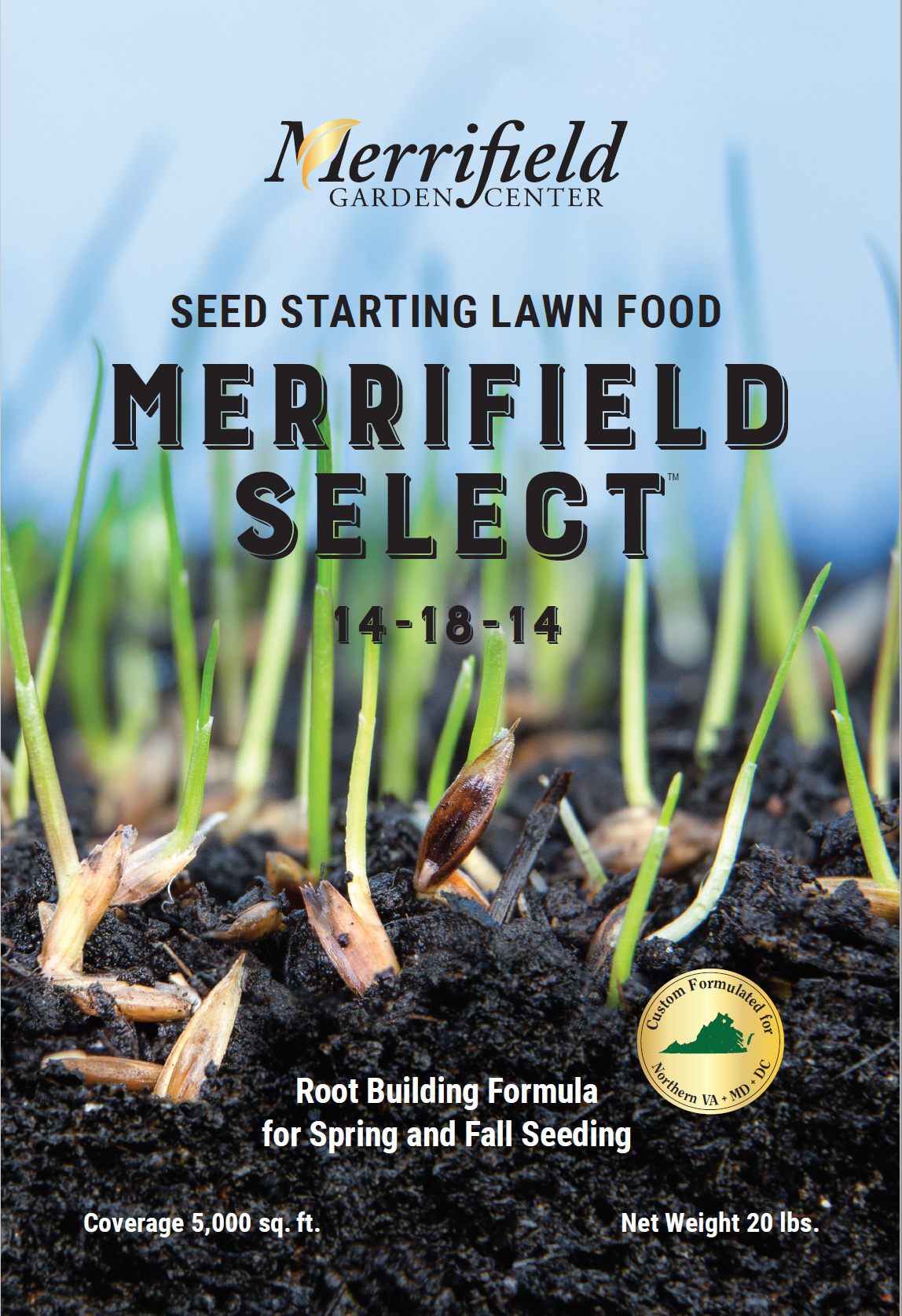
At the time of seeding, we recommend fertilizing with Merrifield Select Lawn Food 14-18-14. This high phosphorous formula will aid in seedling germination and promote strong root growth, which is critical to new seed. In the fall, we recommend following with two applications of Merrifield Premium 26-0-12. After you have seeded and fertilized, be sure to water the lawn thoroughly.




